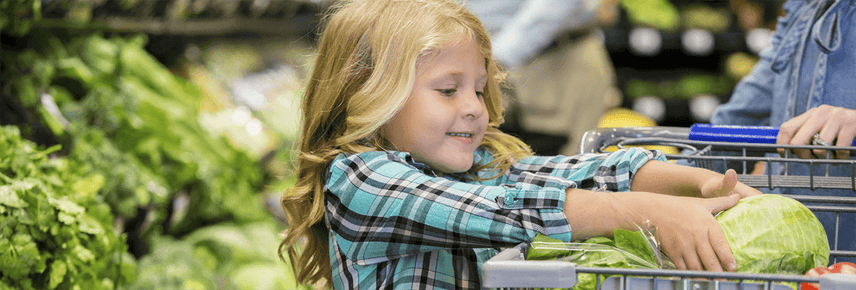
Eating for the environment
We’re incredibly lucky to live in a time when we have access to so much. Whether it's technology, transport, pleasant work and living spaces or just the clothes we put on our backs – all of these things help us to live productive, comfortable lives.
But everything we consume has an impact on the environment - from the production of raw materials, processing, transporting the finished product, potentially powering it for its useful life and how it’s disposed of.
There’s a cycle to everything we consume, so it’s important to be mindful about the impact our consumption has on the environment. And there’s one thing we consume more regularly than anything else – food.
Commercial-scale food production has a huge impact on the environment. Greenhouse gas emissions can be directly attributed to the process of farming food and everything we do to it once it leaves a farm – processing, transporting, cooking or even throwing it away.
When it comes to environmental impact, not all food is created equal.
Guidelines to reduce the environmental impact
While different methods of production can lead to variations of environmental impact, there are some general guidelines that can help you make good dietary choices for both you and the environment.
Minimise the meat
The Environmental Working Group Meat Eater’s Guide to Climate Change and Health report looked into the environmental impact of producing a range of foods. They charted greenhouse gas emissions from both growing the foods to the transportation and processing needed before being ready to serve on our plates.
Of the 20 foods they analysed, the top nine spots for greenhouse gas emissions went to animal foods.
Lamb was responsible for the most greenhouse gas emissions – over 13 times more than that attributed to the highest ranked plant food. Raising large numbers of animals for consumption has a huge effect on the environment and uses considerably more resources and leads to greater greenhouse gas emissions than their plant counterparts.
The landmark EAT Lancet report released early in 2019 provides further evidence of the need to switch to a predominantly plant based diet. Challenged to come up with a recommendation that would both nourish the world's growing population while sustainably managing the planet's precious and finite resources, 37 scientists from 16 countries around the world concluded that widespread adoption of what they termed a 'planetary health diet' - largely vegetarian and low in red meat and sugar - was the most viable solution.
Back in 2013, Australian dietitian Rosemary Stanton was ahead of the time. In her paper A plant-based diet - good for us and for the planet she said: “Not everyone needs to or wants to become vegetarian, but reducing our dependence on meat is a good recipe for our own health and also that of our planet. Diets dominated by plant foods are almost certainly the way of the future”.
Buy whole
If you want to take your environmentally friendly plant foods to the next level, stick as much as possible to shopping in the fresh food section of the supermarket. Canned and frozen vegetables can be great time savers and good to have on hand for emergencies, but the extra processing they go through adds to their environmental impact. By making the effort to go fresh whenever possible, you can avoid excess packaging and processing.
Buy local
This is not just great for the environment, but also great for your community.
Find your closest farmers market and head down there on the weekend to pick up some environmentally friendly fare. The less produce has to travel during production, the less of an impact it has on the environment, so try and support local producers for some fresh, great quality produce that’s good for you and the environment.
Buy only what you need
When we‘ve wasted food at the end of the week it has a twofold effect on the environment. Firstly, the production of that unneeded food was responsible for greenhouse gas emissions and then after it gets thrown away and becomes landfill, it starts to break down and release further greenhouse gases.
In Australia 8.2 million tonnes of food waste are generated each year. That means that the average Australian throws out about 350kg of food a year – the emissions created just by this landfill are equivalent to those produced by electricity used to power a 3-person household for 58 days.
The great news is that with a bit of knowledge, eating for the environment isn’t difficult at all and has extra benefits to your health, your community and your wallet. It’s also something we have the opportunity to do something about multiple times every day – so why not start at your next meal?
Try this...
Decreasing the animal foods in your diet doesn’t have to be a huge change. If you’re looking for a place to start, how about Meatless Monday? Join this global movement by simply starting each week with a day of meatless meals – and we’ve got a whole range of great recipes to get you started.

The latest nutrition advice, plus health and wellness tips delivered to your inbox monthly

